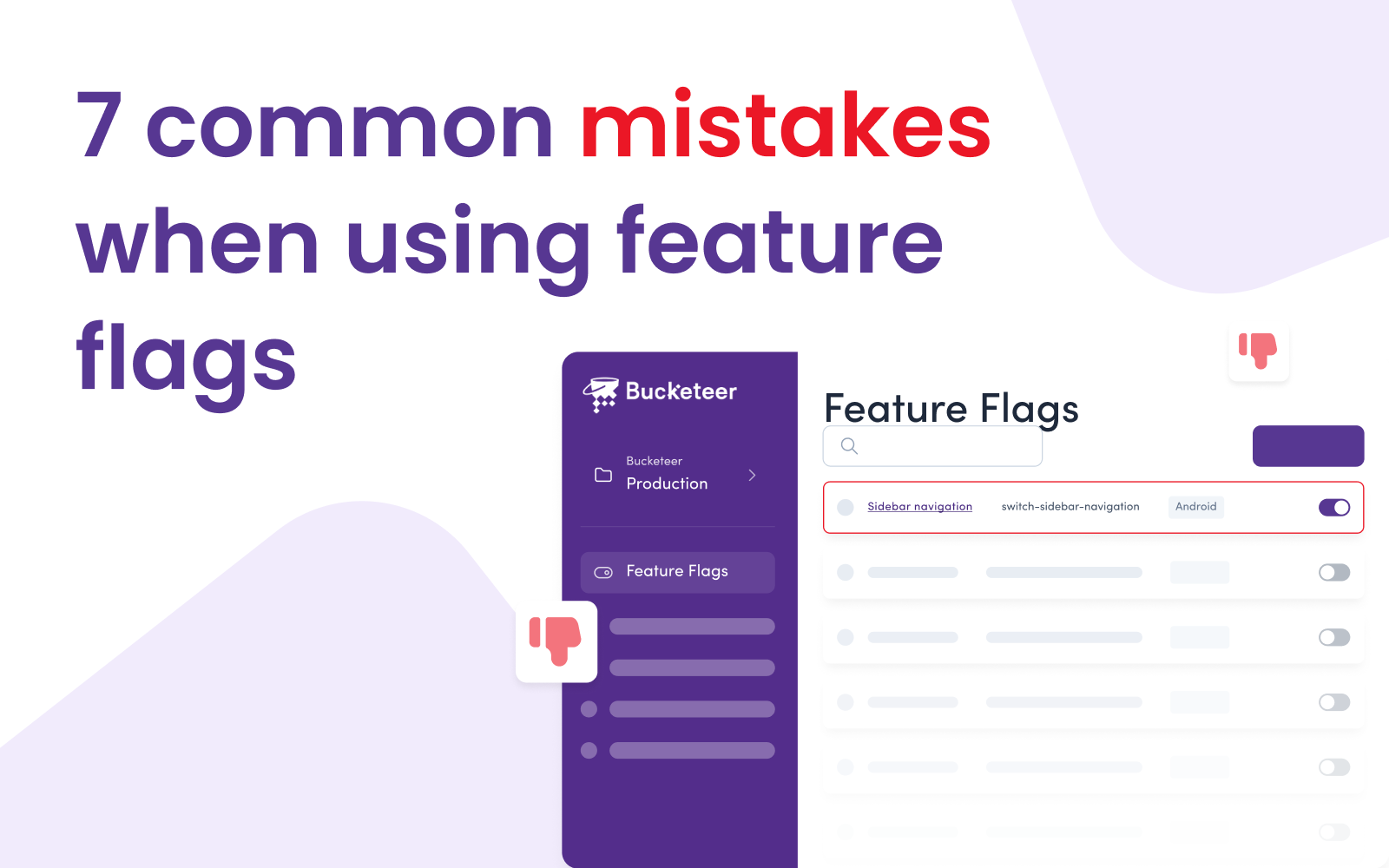
Feature flags are a versatile tool in modern software development, allowing teams to control new feature rollouts, experiment with ideas, and mitigate the risks of deploying untested features to production.
However, avoiding these seven common mistakes is crucial to fully leverage their capabilities and avoid potential pitfalls.
Mistake 1: Overloading flags with multiple purposes
Feature flags work best when they serve a single, well-defined purpose. When you use them for multiple tasks, it can create confusion and operational headaches.
For instance, if a flag toggles a new user interface and a backend process simultaneously, managing and tracking its impact becomes challenging. To steer clear of this, stick to flags with singular purposes.
Mistake 2: Getting too technical with flag names
Feature flags should be understandable to everyone on the team, not just the developers. Instead of employing super technical names like Dark Mode, opt for descriptive terms like Enable Dark Mode.
Furthermore, adding a brief description to your flags can enhance user-friendliness and ensure everyone on the team understands their purpose.
Mistake 3: Treating flags as exclusive developer tools
While developers are responsible for integrating flags into the code, their utility extends beyond the development realm. Teams like customer support and product management can also benefit from feature flags.
Consider using specialized solutions such as Bucketeer, which provides a user-friendly dashboard. This empowers non-technical users to configure flags, resulting in quicker issue resolution, reduced developer workload, and improved visibility into application configuration.
Mistake 4: Handing flag control to untrained teams
Even with user-friendly dashboards, all team members responsible for flags must fully understand their purpose and how they affect the end-user experience. Team members should be aware of their actions before making any changes.
Effective communication and training are important to avoid misconfigurations or unintended consequences. Additionally, selecting tools that offer varying access levels to specific user groups can help prevent unexpected changes.
Mistake 5: Skipping flag ownership
Assigning ownership to each feature flag is crucial for effective management. Whether it's a product manager, engineer, operations specialist, or engineering manager, having a designated responsible party ensures that flags are regularly reviewed and updated.
This practice helps prevent a buildup of outdated flags that could clutter your application.
Mistake 6: Ignoring flag cleanup
Feature flags typically have a short lifecycle, often around 30 days. After a feature has been fully rolled out, removing the corresponding flag from your codebase is essential. Neglecting this step can lead to technical debt, such as unsupported or stale flags, which may complicate issue identification in your application.
Therefore, implementing a workflow to remove flags once their lifecycle is complete or archived systematically can help ensure your application remains free of outdated code.
Mistake 7: Reusing feature flags
Feature flags are designed for single-use and short lifecycles. Reusing a flag intended for a different feature can result in unexpected interactions between features, potentially causing bugs, performance issues, or security vulnerabilities.
A best practice is to create new flags for new features, ensuring a clean and predictable feature management process.
Conclusion
When used correctly, feature flags are a valuable asset in software development. Avoiding these common mistakes enables you to maximize their benefits while minimizing the risk of mismanagement and complications.
By creating purposeful, well-named flags, involving non-technical teams, establishing clear ownership, and diligently cleaning up old flags, you can harness the full potential of feature flags in your software development process.
